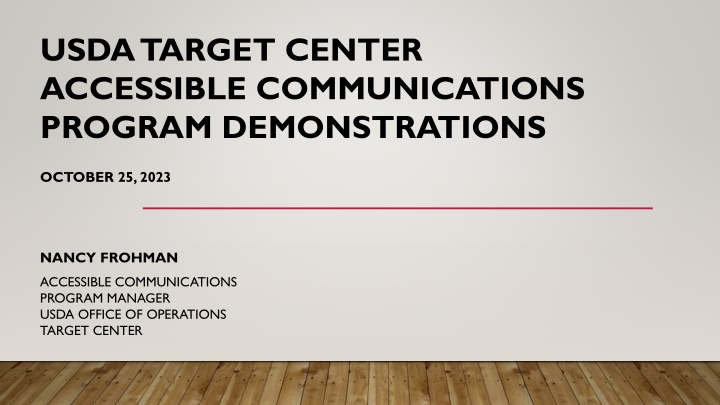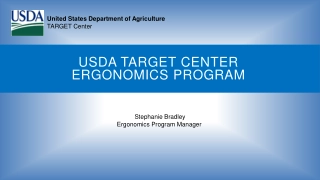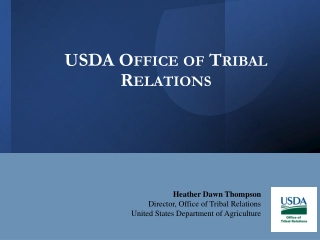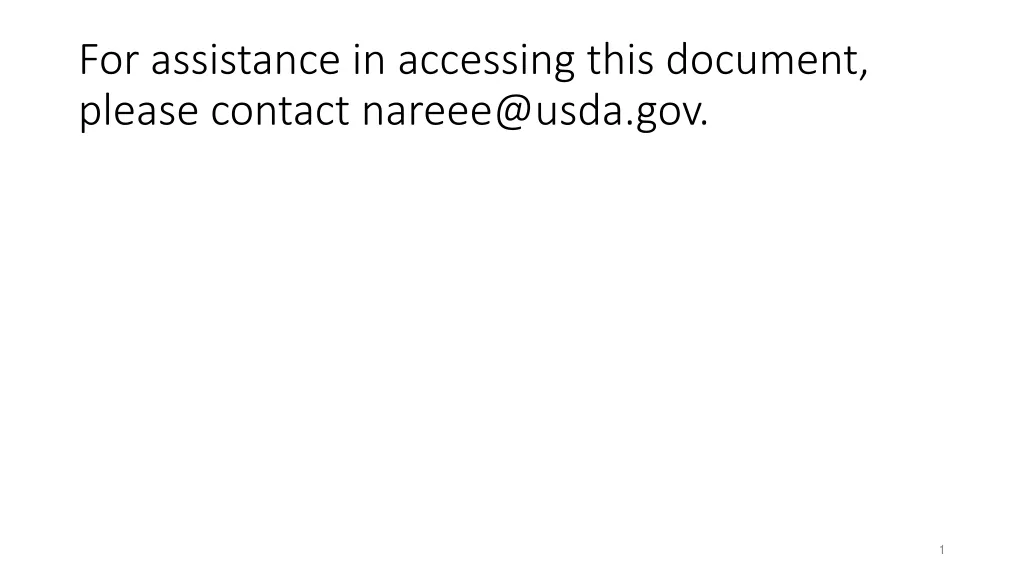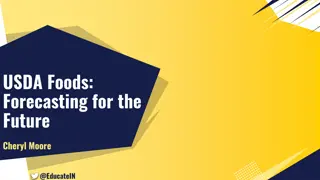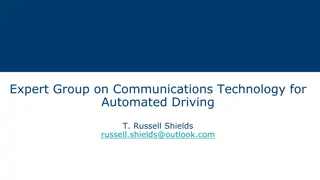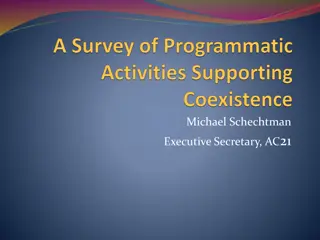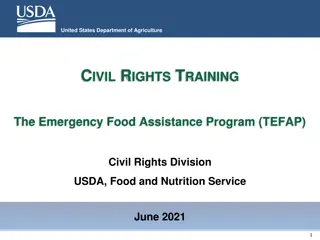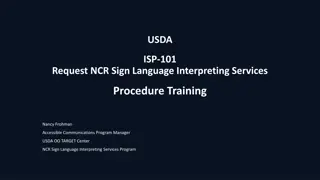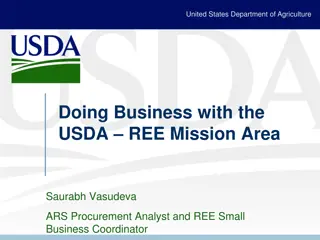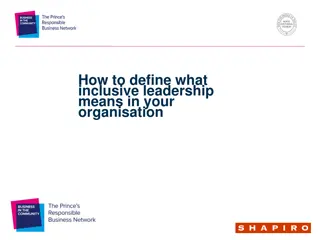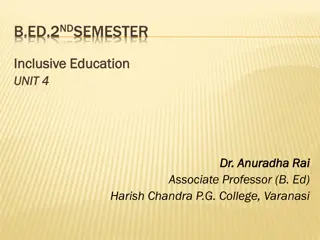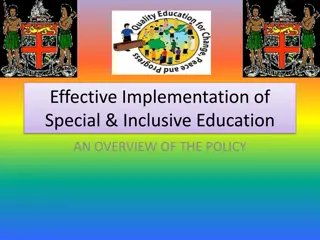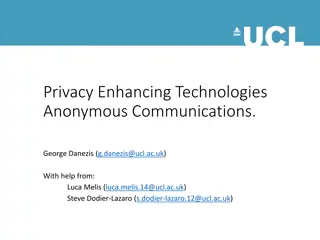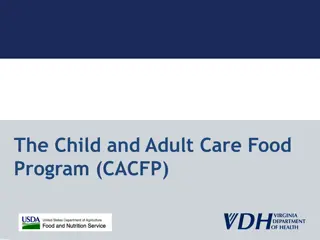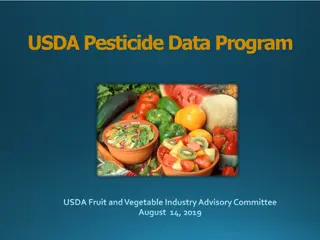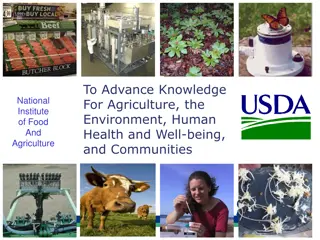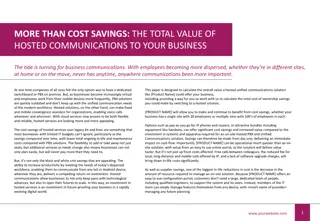Enhancing Inclusive Communications at USDA: A Program Overview
Explore the USDA's accessible communications program aimed at promoting inclusivity nationwide and celebrating National Disability Employment Awareness Month. Learn about key objectives, initiatives to create accessible and inclusive communication experiences, and the benefits of such practices for enhanced engagement and diversity at the workplace.
Download Presentation

Please find below an Image/Link to download the presentation.
The content on the website is provided AS IS for your information and personal use only. It may not be sold, licensed, or shared on other websites without obtaining consent from the author.If you encounter any issues during the download, it is possible that the publisher has removed the file from their server.
You are allowed to download the files provided on this website for personal or commercial use, subject to the condition that they are used lawfully. All files are the property of their respective owners.
The content on the website is provided AS IS for your information and personal use only. It may not be sold, licensed, or shared on other websites without obtaining consent from the author.
E N D
Presentation Transcript
USDA TARGET CENTER ACCESSIBLE COMMUNICATIONS PROGRAM DEMONSTRATIONS OCTOBER 25, 2023 NANCY FROHMAN ACCESSIBLE COMMUNICATIONS PROGRAM MANAGER USDA OFFICE OF OPERATIONS TARGET CENTER
ADVANCING ACCESS & EQUITY National Disability Employment Awareness Month of 2023. Celebrating 50 years of the Rehabilitation Act of 1973! October s special observance month!
LEARNING OBJECTIVES 1. Promote accessibility and inclusivity in USDA Agency communications nationwide. 2. Enhance communication solutions through program evaluations. 3. Identify and address diverse communication needs. 4. Communication tools and practices.
CREATING ACCESSIBLE AND INCLUSIVE COMMUNICATIONS AT THE ENTIRE USDA WORKPLACE AND RESPECTIVE FACILITIES
ENHANCING COMMUNICATION SOLUTIONS THROUGH PROGRAM EVALUATIONS IDENTIFY GAPS AND STRENGTHS. CUSTOMIZED SOLUTIONS. CONTINUOUS IMPROVEMENT.
ADDRESSING DIVERSE COMMUNICATION NEEDS OF INDIVIDUALS WITH DISABILITIES Accessibility Training. Multi-Modal Communication. Individual Support. Collaboration.
CREATING ACCESSIBLE AND EFFECTIVE COMMUNICATION EXPERIENCES Communication Guidelines. Accessible Websites. Interpretation and Translation Services.
INCLUSIVE COMMUNICATION STRATEGIES IN POLICIES AND PROCEDURES Policy and Procedures. Sensitivity and Inclusivity.
Enhanced Engagement. BENEFITS OF INCLUSIVE AND ACCESSIBLE COMMUNICATION PRACTICES Improved Customer Experience. Greater Diversity and Inclusion.
ACCOMMODATING VARIETIES FOR INDIVIDUALS WHO ARE BLIND OR HAVE LOW VISION
Limited or No Sight. EXPERIENCES OF INDIVIDUALS WHO ARE BLIND OR HAVE LOW VISION Accessibility. Orientation and Mobility. Transportation. Stigma and Misconceptions.
Screen Readers. Braille Displays. ACCOMMODATION SOLUTIONS FOR INDIVIDUALS WHO ARE BLIND OR HAVE LOW VISION Screen Magnification. Large Print Materials. Screen Enhancement Software. Assistive Apps.
TRAINING EMPLOYEES TO ACCOMMODATE INDIVIDUALS WHO ARE BLIND OR HAVE LOW VISION Disability Awareness. Accessibility. Sensitivity and Inclusivity. Orientation and Mobility Awareness. Customer Service.
IMPROVING SERVICE CENTERS ACCESSIBILITY FOR INDIVIDUALS WHO ARE BLIND OR HAVE LOW VISION Optimize Lighting. Install Tactile Guidance. Eliminate Visual Barriers.
ACCOMMODATING VARIETIES FOR INDIVIDUALS WHO ARE DEAF, HARD OF HEARING OR HAVE HEARING LOSS
EXPERIRENCES OF INDIVIDUALS WHO ARE DEAF, HARD OF HEARING OR HAVE HEARING LOSS Communication Barriers. Limited Access to Information. Accessibility. Stigma and Misconceptions.
ACCOMMODATION SOLUTIONS FOR INDIVIDUALS WHO ARE DEAF, HARD OF HEARING OR HAVE HEARING LOSS Captioning. Sign Language Interpreters. Video Relay Services. Assistive Listening Devices.
TRAINING EMPLOYEES TO ACCOMMODATE INDIVIDUALS WHO ARE DEAF, HARD OF HEARING OR HAVE HEARING LOSS Disability Awareness. Sensitivity and Inclusivity. Communication. Assistive Technology. Inclusive Workplace Policies and Procedures.
Video Remote Interpreting (VRI). IMPROVING SERVICE CENTERS ACCESSIBILITY FOR INDIVIDUALS WHO ARE DEAF, HARD OF HEARING OR HAVE HEARING LOSS Text Communication. Sign Language Interpreters. Signage. Noise Control. Induction Loop Systems. Vibrating/Visual Alert.
ACCOMMODATING VARIETIES FOR INDIVIDUALS WITH COMMUNICATION DISABILITIES
Limited Verbal Communication. EXPERIRENCES OF INDIVIDUALS WITH COMMUNICATION DISABILITIES Auditory Processing. Accessibility Barriers. Stigma and Misconceptions.
Captioning. ACCOMMODATION SOLUTIONS FOR INDIVIDUALS WITH COMMUNICATION DISABILITIES Quiet Workspaces. Assistive Technologies. Visual Supports.
Disability Awareness. TRAINING EMPLOYEES TO ACCOMMODATE INDIVIDUALS WITH COMMUNICATION DISABILITY. Sensitivity and Inclusivity. Communication Techniques. Accessible Communication. Assistive Technologies.
TRAINING EMPLOYEES TO ACCOMMODATE INDIVIDUALS WITH COMMUNICATION DISABILITY Alternative Communication Methods. Visual Aids. Simple and Concrete Language. Assisted Apps.
ACCOMMODATING VARIETIES FOR INDIVIDUALS WITH COGNITIVE DISABILITIES
Memory and Attention. EXPERIRENCES OF INDIVIDUALS WITH COGNITIVE DISABILITIES Communication. Processing Speed. Sensory Sensitivities. Stigma and Misconceptions.
Augmentative and Alternative Communication (AAC). ACCOMMODATION SOLUTIONS FOR INDIVIDUALS WITH COGNITIVE DISABILITIES Visual Aids. Memory Aids. Assisted Apps. Sensory Support.
TRAINING EMPLOYEES TO ACCOMMODATE INDIVIDUALS WITH COGNITIVE DISABILITIES Disability Awareness. Sensitivity and Inclusivity. Accessible Communication. Assistive Technologies. Inclusive Workplace Policies and Procedures.
IMPROVING SERVICE CENTERS ACCESSIBILITY FOR INDIVIDUALS WITH COGNITIVE DISABILITIES AAC Clear Signage. Sensory Considerations. Visual Supports.
Universal Design. Communication Techniques. BEST PRACTICES FOR CREATING A WELCOMING ENVIRONMENT Feedback. Inclusive Workplace.
EVALUATION: STEP ONE You request the evaluation form. You fill and submit the evaluation form. I review the evaluation form. I gather information about your service center.
EVALUATION: STEP TWO Identify and Findings. Schedule a meeting. Recommendations. Resources.
EVALUATION: STEP THREE Follow-Up. Feedbacks. Support. Solutions.
CURRENT AND UPCOMING MEETINGS OCTOBER MONDAY WEDNESDAY THURSDAY TUESDAY 10/17/2023 10/17/2023 10/18/2023 10/16/2023 11:00 AM 12:00 PM Unmasking Hidden Challenges: Chronic Conditions in the Workplace Dr. Theresa Haskins Haskins Consulting 10:00 AM 11:00 AM Ergonomic Equity: Addressing Risk Factors Through Job Analysis and Prevention Sandra Miller Britroix 11:00 AM 12:00 PM USDA TARGET Center Accessible Communications Program Nancy Frohman Accessible Communications Program Manager 12:00 PM 1:00 PM Digital Accessibility Fundamentals for Websites, Documents, and Video Mike Caprara The Viscardi Center 1:00 PM 2:00 PM Equity, Accessibility, and Inclusion in the Workplace (Part 1 of 2) Dr. Theresa Haskins Haskins Consulting 10/25/2023 10/24/2023 10/23/2023 10/26/2023 10/25/2023 11:00 AM 12:00 PM Thriving with ADHD at Work Dr. Theresa Haskins Haskins Consulting 11:00 AM 12:00 PM Emotional Intelligence (Part 1 of 2) Carolyn Owens, MCC, SPHR 10:00 AM 11:00 AM Assistive Technology at New Heights Dr. Wayne Crolley Novare Products, LLC 10:00 AM - 12:00 PM USDA TARGET Center Accessible Communications Demonstrations (Virtual/Onsite) Nancy Frohman Accessible Communications Program Manager 1:00 PM 2:00 PM Equity, Accessibility, and Inclusion in the Workplace (Part 2 of 2) Dr. Theresa Haskins Haskins Consulting 1:00 PM 2:00 PM Proper Posture in the Workplace to Prevent Posture-Related Problems (Part 1 of 2) Dr. Krista Burns American Posture Institute
CONTACT INFORMATION TARGET Center Website https://www.usda.gov/target-center TARGET Center Email target-center@usda.gov TARGET Center Phone Number (202) 720-2600
